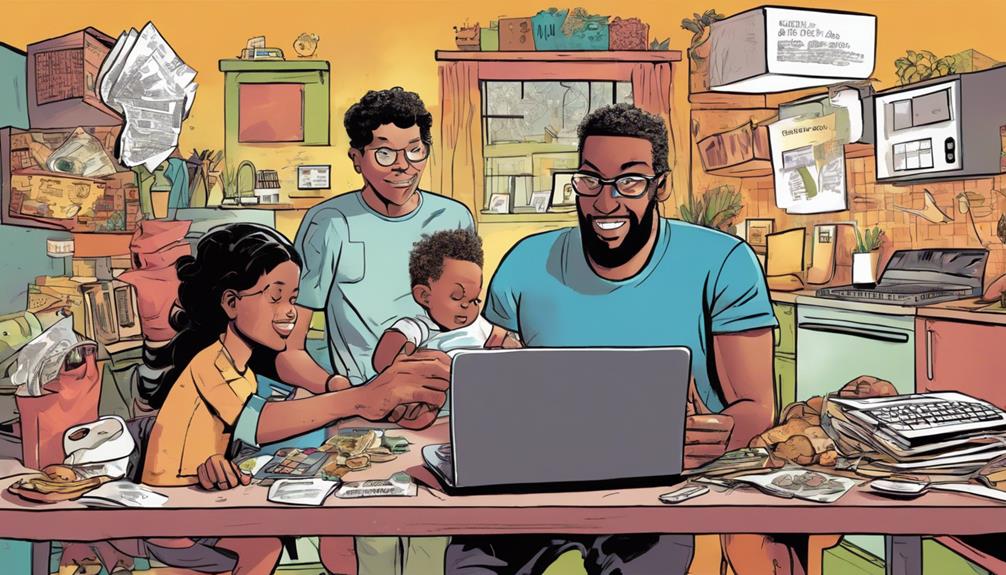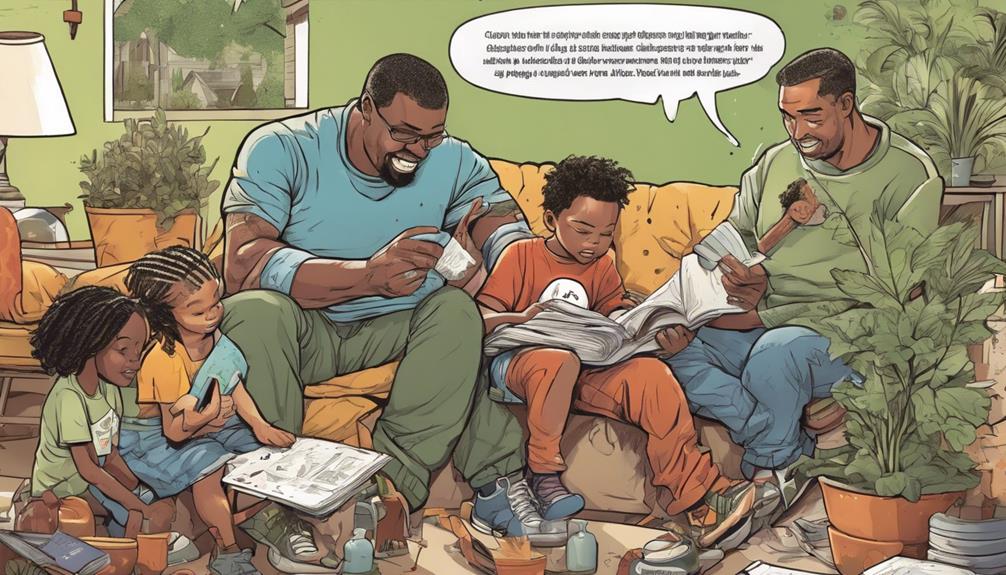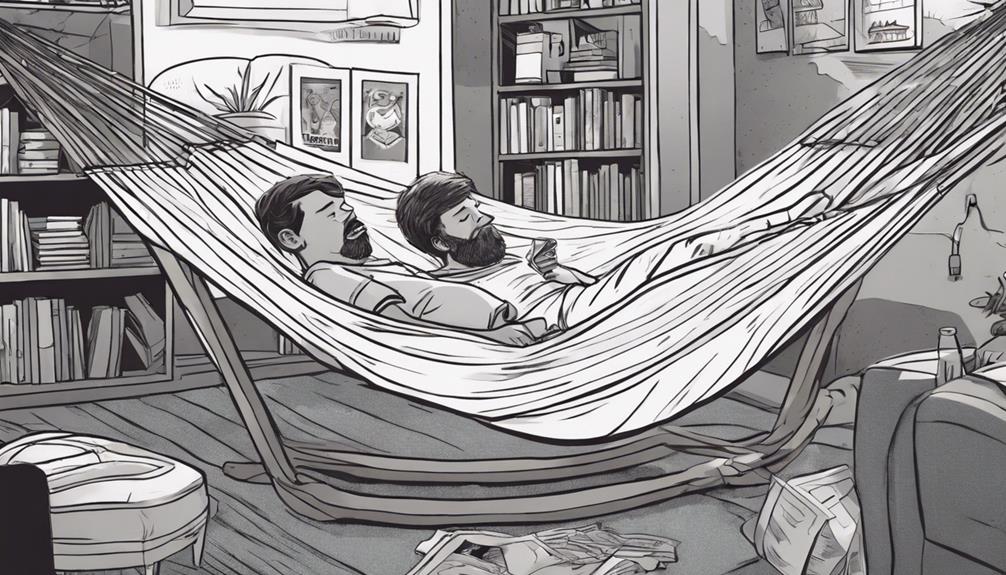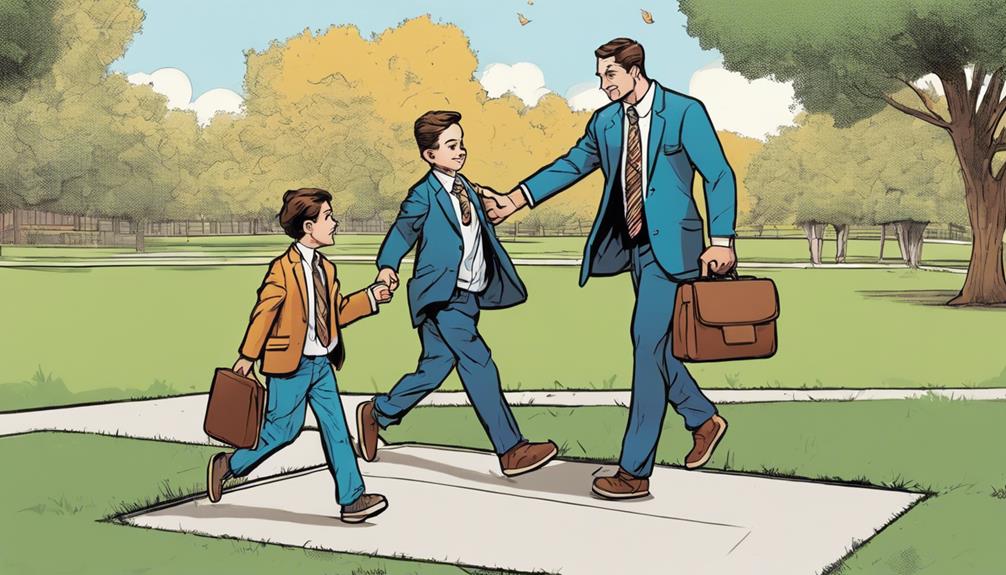The increase in stay-at-home dads signifies a growing trend in modern society, with more fathers opting to be the primary caregivers for their children. Factors such as shifting gender roles, flexible work arrangements, and a desire to be actively involved in parenting contribute to this rise. Men embracing the role of main caregiver challenge stereotypes and redefine traditional family dynamics. Statistics show a notable increase in the number of stay-at-home dads, reflecting changing attitudes towards parenting and family structures. This trend highlights a significant shift in societal norms and emphasizes the importance of fathers in childcare. Further insights await for those curious about this evolving phenomenon.
Key Takeaways
- Increase from less than 1% to about 4% of stay-at-home dads since 1970.
- 21% of stay-at-home dads cite family care as the main reason for staying home.
- 70% of men expressed willingness to be primary caregivers in a 2015 survey.
- The number of stay-at-home dads in the UK doubled to 229,000 in a decade.
- More fathers are actively embracing the role of primary caregiver, reflecting evolving family dynamics.
Positive Choice for Primary Carer
Staying at home with children has increasingly become a favorable choice for men in modern times. Since 1970, the percentage of stay-at-home dads has risen from less than 1% to about 4%.
In 2014, 21% of stay-at-home dads cited family care as their primary reason for staying home. A survey in 2015 showed that 70% of men expressed willingness to be the primary caregiver for their children.
This shift is evident in the UK as well, where the number of stay-at-home dads doubled to 229,000 in just a decade. Men are recognizing the importance of being actively present in their children's lives, leading to a gradual increase in the number of fathers choosing to stay at home and take on the role of primary carer.
Economics and Stay-At-Home Dads

The shift towards men choosing to be primary caregivers for their children is closely intertwined with economic factors in modern society. This trend reflects changing dynamics in the workforce and family structures.
More men are opting to stay at home as 42% of US mothers were sole or primary breadwinners in 2015. The gap between stay-at-home moms and dads is slowly narrowing, indicating a shift in traditional gender roles.
Flexible working arrangements and shared parental leave policies are becoming more prevalent, supporting men in their decision to stay at home. The appeal of prioritizing family care and being actively involved in child-rearing is a significant motivator for men choosing to be stay-at-home dads.
Insights From Real Stay-At-Home Dads

Men who choose to be stay-at-home dads provide valuable insights into their motivations and experiences in this evolving societal role. Many men are realizing the importance of being present in their children's lives, opting to stay at home to have a formative influence on their upbringing.
Some cite the closing pay gaps between genders as a factor influencing their decision, while others believe they are better suited for the role of primary carer. Attitudes towards men as primary caregivers are shifting, reflecting a broader societal change towards more gender-neutral parenting roles.
These real stay-at-home dads play an essential role in challenging stereotypes and redefining traditional family dynamics, contributing to the increasing acceptance of flexible working arrangements and shared parental leave in today's society.
Related Trends and Statistics

In modern society, an increasing number of fathers are actively embracing the role of primary caregiver for their children. This trend is reflected in shifting societal attitudes and evolving family dynamics.
The percentage of stay-at-home dads has risen from less than 1% to about 4% since 1970. In 2014, 21% of stay-at-home dads cited family care as the main reason for staying home.
Additionally, 70% of men surveyed in 2015 expressed willingness to stay at home with children. The number of stay-at-home dads in the UK doubled to 229,000 in a decade.
Engage and Share Your Thoughts

Encouraging active participation and open dialogue fosters a community of shared experiences and diverse perspectives. Readers are invited to share their thoughts on the rise of stay-at-home dads in modern times. By leaving comments, individuals contribute to a deeper understanding of this evolving trend.
Notifications for follow-up comments and new posts are available, allowing for ongoing engagement with the topic. The site utilizes Akismet to reduce spam, ensuring a more focused and relevant discussion.
Readers can stay updated on the latest dad news and further interact with the content through provided social media links. Your insights and reflections are valuable in shaping the conversation around the increasing presence of stay-at-home dads in today's society.
Frequently Asked Questions
How Does Society View Men Who Choose to Stay at Home With Their Children?
Society is gradually embracing men who opt to stay at home with their children, recognizing the importance of their role in caregiving. As attitudes shift towards gender-neutral parenting, men's decisions to prioritize family care are being increasingly respected and valued.
What Are the Long-Term Effects of Fathers Being the Primary Caregivers?
The long-term effects of fathers being primary caregivers may include stronger parent-child bonds, enhanced emotional development in children, and more balanced gender roles within families. This shift can lead to a more equitable and fulfilling family dynamic.
Are There Support Groups Specifically Tailored for Stay-At-Home Dads?
Support groups tailored for stay-at-home dads provide essential resources, camaraderie, and advice for men in this role. These groups offer a platform for sharing experiences, addressing challenges, and fostering a sense of community among fathers embracing their caregiving responsibilities.
How Do Stay-At-Home Dads Navigate Social Interactions and Stereotypes?
Stay-at-home dads navigate social interactions and stereotypes by embracing their role as primary caregivers, challenging traditional norms, and forming supportive networks. Despite societal expectations, these dads are redefining parenting roles with confidence and dedication.
What Are the Challenges Faced by Stay-At-Home Dads in Balancing Work and Family Life?
Balancing work and family life presents challenges for stay-at-home dads, including managing household responsibilities, maneuvering societal expectations, and maintaining a sense of identity outside of traditional gender roles. Support networks and open communication can help address these issues effectively.
Conclusion
To sum up, the rise of stay-at-home dads reflects a shifting societal landscape where men are increasingly choosing to take on primary caregiving responsibilities.
While some may argue that traditional gender roles are being challenged, it is important to recognize the diverse reasons and motivations behind this trend.
As more men actively participate in child-rearing, the narrative of parenting as a shared responsibility continues to evolve, promoting greater gender equality and family dynamics.










